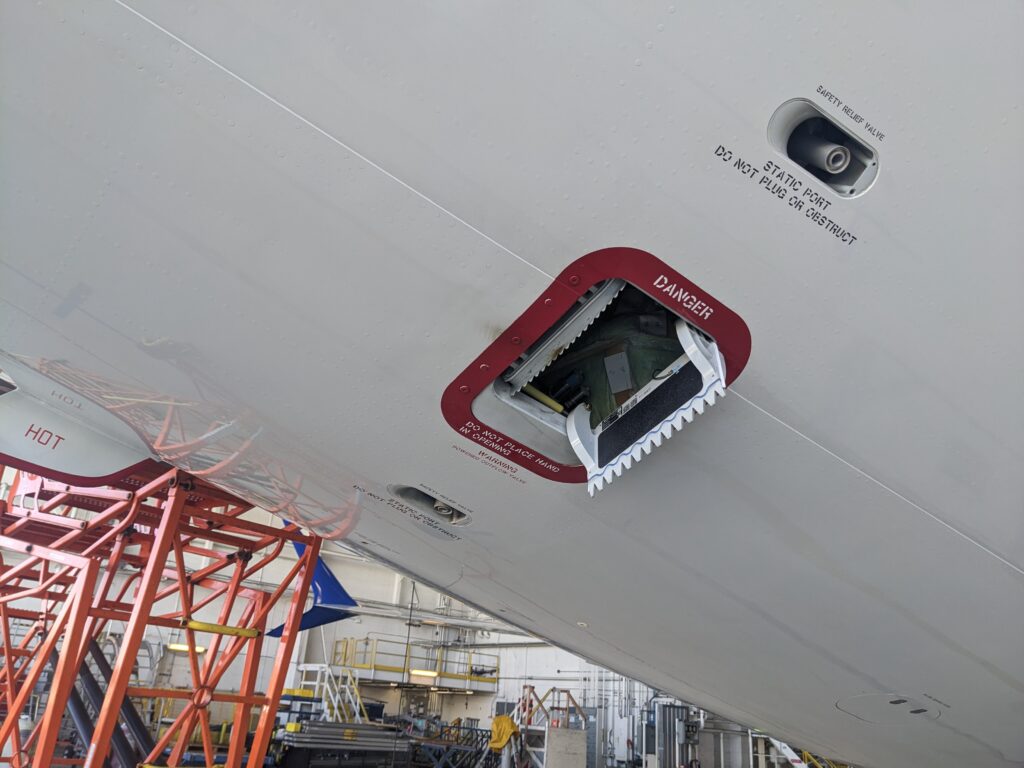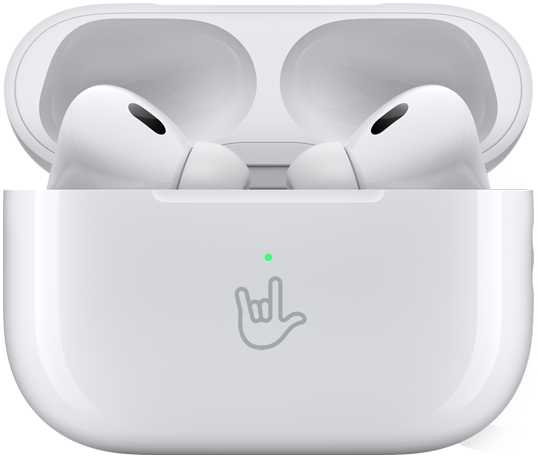If United had included AirPods Pro-specific support with its new in-seat entertainment’s Bluetooth capabilities, I could’ve made money writing this up for Macworld. Alas, t’was not to be. However, I found my visit to the United Airlines Maintenance center at SFO, where I was given a chance to get up close and personal with a 737 Max 9 (see below) and the AirPods Pro, fascinating enough that I felt the need to put pen to paper anyway.

Bluetooth is better
Though I didn’t appreciate the implications initially, that United now makes it possible to connect your headsets wirelessly via Bluetooth to their in-flight entertainment system is a real convenience. Wires, as much as I love them at home, are a royal pain on an airplane. If you’ve ever had to pause the movie and unplug or remove your headphones when the person next to you had to heed the call of nature, you know what I mean.
Also, suspension of disbelief is hard enough to come by with today’s Hollywood dreck. If you’re are lost in the rare good story, it’s a lot easier to stay that way if there’s only a momentary visual interruption as you stand up to let your fellow passenger out.

United sat us in first class, and I must say, the size of the displays (see above) in their new in-seat entertainment system was impressive, though I’m guessing that the coach displays aren’t as large. Whatever the case, Bluetooth is a boon for all travelers. Now if they’d just do something about the leg room in coach…
Apple’s clever ANC
Having only heard Apple’s AirPods Pro once before while A/B’ing a loaner pair against some other earbuds, I’d never really kicked the tires thoroughly. That changed at the demo. I knew they employed ANC, but I didn’t know they’d automatically tamp down the volume of the material you’re listening to when you start to speak. If you enable the option that is. Apple labels this “Conversation awareness” and it’s accomplished using complex algorithm taking input from all the onboard sensors.

This is a nice perq that does help you hear what you’re saying far better. However, as conversations are generally two-way, I’d like to see Apple offer an option to automatically up the transparency as well, i.e. let in more outside audio.
Under Apple’s current implementation, the ANC remains wherever you’ve set it when conversation awareness kicks in. In my case, that was full noise reduction, so while I could hear what I was saying more clearly, I couldn’t hear what the Apple rep was saying nearly as well. I had to remove an earbud for that. I could’ve switched ANC modes, but this being only my second time with the AirPods Pro, I had no idea how (hold the stems).
In the end, while conversation awareness is a clever feature, it won’t eliminate the need to pull the earbuds out or change settings if the ANC is on full blast. As that’s kind of the point, I hope Apple rethinks the implementation.
So how does ANC work?
Just in case you’re not familiar, active noise cancellation works by grabbing the sound/noise surrounding you using the integrated microphones, splitting it into two signals, then taking one signal and playing it phase reversed. Identical audio signals played simultaneously at the same strength cancel each other out when one is phase-reversed.
As the outside noise is the original signal, the phase-reversed signal tends to cancel out any of that leaking in as well. That’s the magic of it. If done properly, you’ll notice little to no difference in the timbre of the material you’re listening to. If not, a drop in the high-end, and sometimes other ranges will be heard.
Lowering the strength of the phase-reversed signal allows more of the original signal to be heard, increasing transparency, (as previously explained–the amount of ambient sound allowed in). Note that letting in the outside noise generally requires amplifying the original signal captured by the mics. Shoving things into your ear canal or placing them over your auricles tends to reduce ambient sound levels all by itself.
They sound very, very good
I figure that while I’m at it, I should render an opinion on the sonic qualities of the $250 AirPods Pro. Out of the box, the AirPods Pro are up there sonically with my all time favorites–the $200 Marshall Motif II ANC’s.
Actually, the AirPods Pro and Motif II’s sound startlingly similar at their defaults, but I dearly miss the persistent resident EQ function on board the Marshalls. It lets me tweak the sound of the earbuds to taste without the hassle of altering the EQ in each playback app. A small thing perhaps, but I do switch devices quite often and not all equalizers are the same, or created equal. Yes, I just wrote that.
While Apple doesn’t offer persistent EQ, they do employ something called adaptive EQ. According to the company, this alters the frequency response according to the acoustic conditions created by the AirPods Pro sitting in your ear canal. Nice, but if you want more overall sparkle or oomph, you still need to add it yourself.
Nits aside, the AirPod Pros are excellent earbuds, very stylish, and generally worth the bucks.